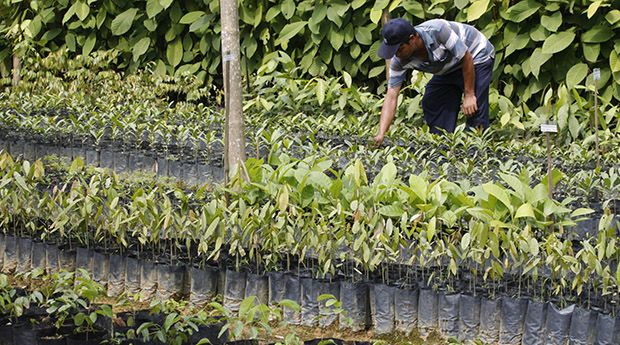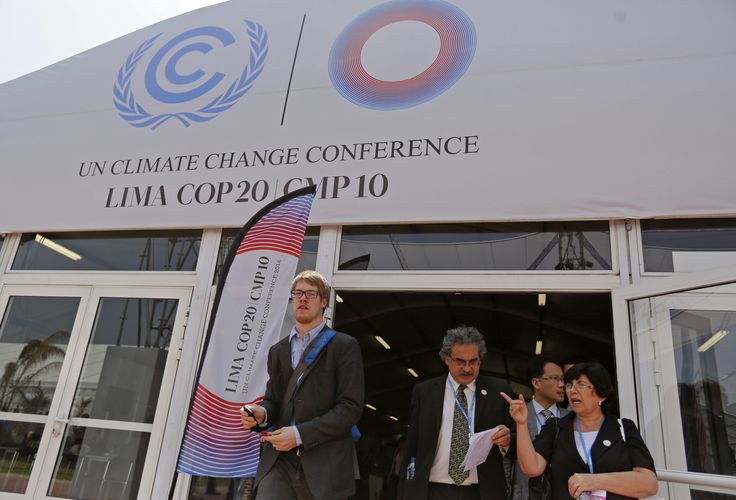Latin America is potentially fertile territory for Green bonds and there are signs that this market may be about to take off.
A striking characteristic of the vast Lupuna tree that dominates the Amazon rainforest is its huge buttress roots that anchor it in this unique bioregion’s surprisingly shallow soil.
The roots of the giant ceiba – considered in folklore as the guardian of the rainforest – evoke the role played by the multilateral banks in sustaining a shallow but potentially huge market for Green bonds.
There are signs that 2015 could witness a significant breakthrough in Green bond financing in a market potentially worth US$45bn by 2018, after landmark Latin American issues and pioneering conferences to gauge interest late last year.
Sean Kidney, CEO and co-founder of the Climate Bonds Initiative, said: “We are looking at US$300bn of global Green bond issuance a year in 2018 and I would be very hopeful that we would see somewhere between 10% and 15% of that coming from Latin America because of the size of the economies. Quite a lot is going on in the region and there are the beginnings of investor interest – so I’m pretty optimistic about this year.”
Abundant in natural resources and containing sub-regions such as the Amazon that are at the heart of concerns about global warming, Latin America has played a prominent role in green debates and Peru recently hosted the 2014 UN Climate Change Conference.
Yet the region has largely been isolated from the stellar growth in the global Green bond market, which is set to reach US$100bn of issuance this year and to treble again by 2018.
Nonetheless, conferences about Green bonds late last year in Mexico City and Sao Paulo turned heads, and multilateral banks and local regulators are searching for ways to seed this market. All eyes are now on promising countries for issuance such as Brazil and Mexico.
“We are seeing growing interest in Green bonds in a number of different regions, particularly in emerging markets such as Latin America where there is a lot of need for investment in longer-term infrastructure projects,” said Laura Nishikawa, executive director ESG research at investor intelligence group MSCI.
“There has definitely been a lot of interest and chatter. We have heard a lot of talk from the investor side and development banks, in particular within Brazil. Whether that talk turns into Green bond issuance, though, will depend on key public sector institutions taking the first step.”
Brazil’s banking federation Febraban is involved in a global enquiry into sustainable financial markets led by the UN Environment Programme, Banco Santander Brasil has been talking with local corporates about Green bonds, and national development bank BNDES is on record as committing to issuance at some stage.
The Mexican, Peruvian and Colombian governments are keen to see landmark issuance and Chile already has a large fund management industry and a large renewable energy pipeline.
There is also considerable potential for Green municipal bonds in Latin America – its mega-cities play a prominent role in the C40 Cities Climate Leadership Group.
Strictly speaking, Green bond issuance already exists in Latin America in a non-labelled form and past bonds would have qualified as “Green” under current criteria.
Mexico, for example, led the way in 2012 when Spanish power company Acciona financed a wind energy portfolio in Oaxaca through a US$300m BBB– (S&P) project bond, which met all current requirements to qualify. In 2013, there was also a flurry of reports that Brazilian renewable energy developer Renova Energia was considering an issue.
Main drivers
But it is the multilateral development banks – and in particular the International Finance Corporation – that remain the main drivers of Latin America’s engagement with Green bonds so far.
As of January 2015, the IFC had issued US$3.7bn in Green bonds globally, but whereas it led the way with benchmark issues in 2013, it explicitly changed tack in 2014 to seed national markets. This paid off in August when IFC issued a S42m (US$15m) Green bond for local investor RIMAC Seguros, Peru’s leading insurance company. The AAA rated, 20-year, zero-coupon issue was seen as a key moment in the effort to seed domestic markets.
“We are so thrilled: I jumped up and danced when I heard this. The IFC’s billion-dollar benchmarks did break open the market; that was the moment everyone got excited”
Ben Powell, head of funding at the IFC’s Treasury, said: “We have a big insurance company, Peru’s leading insurance company, going out there and being very vocal about investing in this type of Green bond but also about really committing to their corporate social responsibilities. I really think that you will get this trickle-down effect and that it will apply pressure to others to match and even go beyond what RIMAC has done. It’s too early to be talking about billions of dollars, but I do think it will lead to more investors following.”
IFC says the soles-denominated bond is part of a strategy to grow the Green bond market “multi-directionally” that is no longer solely reliant on global benchmarks. The move is important because domestic investors – particularly large insurance funds – have their largest allocations in local currencies to avoid foreign exchange risk.
Influential observers such as the London-based CBI were delighted with the IFC’s strategic shift. Sean Kidney said: “We are so thrilled: I jumped up and danced when I heard this. The IFC’s billion-dollar benchmarks did break open the market; that was the moment everyone got excited. They have done that, so what they are doing now is looking at their role in kick-starting domestic Green bond markets.”
Peru was also the scene of another key development in December when wind energy pioneer Energia Eolica successfully brought to market a US$204m Green project bond with a coupon of 6% and 20-year tenor.
Relatively absent from this market so far have been the Inter-American and the Andean development banks, IDB and CAF, both of which place sustainability at the heart of their work. The IDB dipped in its toe in 2014 with US$50m to promote energy efficiency investments and partial credit guarantees of US$56m for the ultimate listing of Green bonds in Mexico. It has veered more explicitly into “social impact” bond finance, although the Inter-American Investment Corporation, a member of the IDB group, has invested in Green bonds.
IDB executive vice-president Julie T Katzman said: “At the IDB, 100% of what we do has development impact and is socially responsible. We have a large portfolio of renewable energy projects and we are the largest impact investor in Latin America. As the market for Green bonds grows, projects in Latin America should be increasingly attractive – renewable energy, energy efficiency, forestry – whether as direct impact investments or through investing in Green bonds through the capital markets. The region has obvious potential.”
CAF might seem a better candidate for issuance as the largest multilateral funder of infrastructure in Latin America but has been slow off the mark, although informed sources suggest senior figures are looking at Green bonds.
Although there are opportunities for large corporates to issue green paper in renewable energy, transport, water management, bio-energy and green property, especially the parastatals, it is more likely that experienced local subsidiaries of multinationals will become the corporate leaders. Peru’s Energia Eolica, for example, is an indirect subsidiary of New York-based Contour Global.
Mario Lopez-Alcala, lead Latin America analyst at MSCI, said: “If you look at foreign subsidiaries operating in Latin America they will be able to fund their projects using Green bond financing just because they bring with them much more experience. This doesn’t mean local companies couldn’t do it, it’s just that there is not that much awareness and their capabilities to raise financing outside the region are going to be much more limited. But for the multinational players, Latin America could be an interesting market.”
One sign of progress is growing demand for ESG ratings in the region. In 2014, MSCI expanded its presence in Latin America. The Santiago Stock Exchange also asked it to explore the feasibility of a local ESG index, and the ratings group has had exploratory conversations with national pension funds looking to establish an ESG policy.
But is there sufficient investor appetite to sustain a healthy Green bond market?
Central banks such as that of Brazil have been enthusiastic investors in IFC benchmarks, Energia Eolica’s bond offering received orders from domestic investors, and corporates in countries such as Mexico are seen as having cash to invest.
“We have had a team in Mexico looking at issuance opportunities, and potentially at domestic issuance if the demand is there. We are also looking at whether there are investors who would do what RIMAC did and invest in kind of an offshore Mexican peso deal, for example,” said IFC’ s Powell.
“In our dollar Green bonds, we haven’t seen Mexican investors but we have seen some central banks from Latin America and they are very committed to supporting the product. Some of the large insurance companies that have Mexican peso assets want to put them to work and there will be opportunities on the back of that. It’s really just about creating the right structure for them to do so.”
At the UN climate summit insurers’ associations said their members – many of which are in Latin America – are set to increase exposure to climate-related investments tenfold by 2020.
However, although sustainability is high on the agenda in Latin America policy-making circles, there remain obstacles to experimentation with Green bond finance.
Lopez-Alcala of MSCI said: “I just don’t see the awareness or the local capability to cope with issuing Green bonds yet. Local companies are not as developed in thinking in these terms with the exception of Brazil, which has vast natural capital and was an early investor in ethanol. But when you look at other countries, very few companies have the size and international exposure equipping them with the knowledge, experience and know-how to implement these new financing alternatives.”
Other important concerns that cannot be ignored include land rights – Latin America is awash with disputes over natural assets – and there may be cultural and governance issues.
Nonetheless, Powell is confident that global growth in Green bonds will ultimately nourish the roots of the market in Latin America. “Clearly, the market has been driven by Europe and a lot of the targeted SRI fund managers in the US and it is really difficult to speak for investors in Latin America, but I would hope that because of the fact that there is so much more issuance and volume globally there will be this trickle-down effect in the region.”
Seed funding
Since the debt for nature swaps of the 1980s, the Latin American and Caribbean region has been a prominent proponent of using financial mechanisms to confront climate change.
At last year’s climate summit (COP20) in Lima, Peru, funding to address global warming and in particular capitalisation of the Green Climate Fund (GCF) was a key topic of discussion.
The GCF was established in Mexico in 2010, under the framework of the UN Framework Convention on Climate Change, to redistribute money from the developed world to developing countries in support of climate adaptation and mitigation.
In Lima, three members of AILAC – the Independent Association of Latin America and the Caribbean, a group of countries from the region that co-operate in climate talks – made commitments to the fund, whose capitalisation reached US$10.2bn.
Mexico has also said that it would contribute to the GCF, whose goal is to mobilise US$100bn annually by 2020.
Latin America is a major recipient of green finance and all the members of AILAC receive climate funding from traditional sources such as multilateral development banks, development agencies and specialised funds such as the Global Environment Facility (GEF), the Climate Investment Funds (CIF), and the Adaptation Fund.
Individual AILAC countries such as Chile and Peru are also taking creative approaches to climate finance.
Chile has established trust funds at the Inter-American Development Bank that help support other Latin American countries develop green solutions, and in September the country also approved the first carbon tax in South America, following on from Mexico’s decision to do so in January.
Peru, the host of last year’s climate conference, has been a prominent source of green initiatives. Last year, for example, the IFC issued its first Green bond denominated in Peruvian soles with insurer RIMAC, and wind energy producer Energia Eolica issued a US$204m green project bond (see main story).
In December, Peru’s Cordillera Azul National Park was granted the Amazon’s largest loan by a private invested fund, Althelia Climate Fund, secured by more than 8m carbon credits. The loan is designed to promote forest conservation and sustainable agro-forestry.
European climate funding is also well established in Latin America. In 2009, the EU launched the Latin American Investment Facility (LAIF), which provides grant aid for infrastructure projects with sustainable objectives alongside other forms of EU finance such as hybrid and concessional loans, guarantees, equity investments, risk mitigation, and technical assistance.
The EU, Germany and Norway created the Global Fund for Energy Efficiency and Renewable Energy – a fund-of-funds under the auspices of the European Investment Bank that catalyses private sector capital into clean energy projects and invests in Latin America and other regions.
In 2012, German development bank KfW and the Andean development bank CAF created a Programme for Climate Change and Clean Energy, and last year the two institutions also agreed to launch a risk mitigation fund for geothermal development in Bolivia, Chile, Colombia, Ecuador and Peru.
Several AILAC countries have also participated in the operations of the EcoEnterprises fund led by the IDB’s Multilateral Investment Fund, one of the biggest investors in microfinance and venture capital funds for small businesses in Latin America and the Caribbean. EcoEnterprises aims to support biodiversity, preserve critical ecosystems and direct capital to community-based sustainable businesses.
The information in the boxed-out section of this article was sourced from a blogpost written by Soledad Aguilar, Luis Fierro and Virginia Scardamaglia. It is available here.
To see the digital version of this report, please click here
To purchase printed copies or a PDF of this report, please email gloria.balbastro@thomsonreuters.com.
Soledad Aguilar




